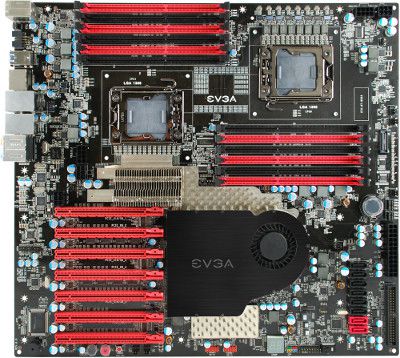I guess my prediction wasn't off then when i said 2x 1.2kw....
Just thinking of the internal wiring is a headache. Which PSU would power which components? My guess is, one PSU powers the 2 processors and mother board (including the PCI-E lanes) and the second PSU (using a jumper switch i presume) would provide the secondary power the graphics cards. But where do you plug in the hard drives and such. Also, would two PSU's cause trouble if each provided slightly different voltages on a given rail... 5v, 12v etc, as well as phase mismatching and leakage. Do graphics cards keep the PCI-E lane and external power lines separate? I don't know if any of this is a concern at all, but i thought i'd ask anyway...
Here in the UK, 13 Amps on a single socket is the limit, which at 230-240 volts is 3.0 - 3.2kw. Two 1.2kw psu's running at 1.0kw each under full load, gives you 2kw. I'll assume multi monitor displays here as well, say three 30" screens at ~200 watts each (though typically, they're around 150-160 watts)... thats 2.6kw's.... This leaves 400-600 watts spare for speakers, networking + miscellaneous items, which can easily be consumed, especially from the speakers. So Yeah, you'd need more than one extended power socket to be safe.... and forget about a UPS, unless you have a bank of batteries ready...
Here's an interesting test.... take something of an equivalent power consumption, like an electric radiator, and measure their effectiveness to heat a room.... One radiator Vs a super computer, 3 monitors and speakers.



